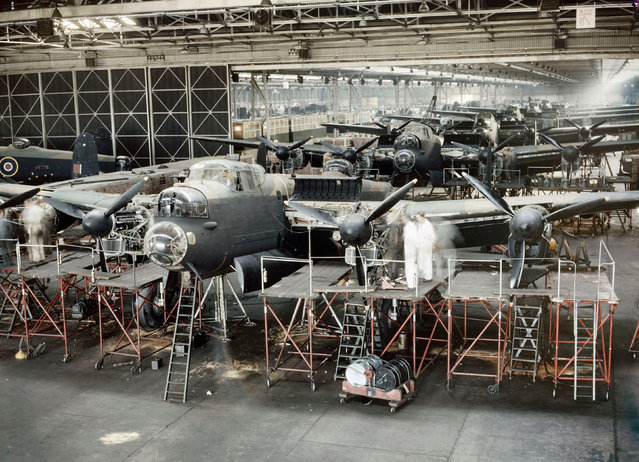
Lancaster bombers nearing completion in Avro’s assembly plant at Woodford near Manchester, 1943. (Photo by IWM/PA Wire)
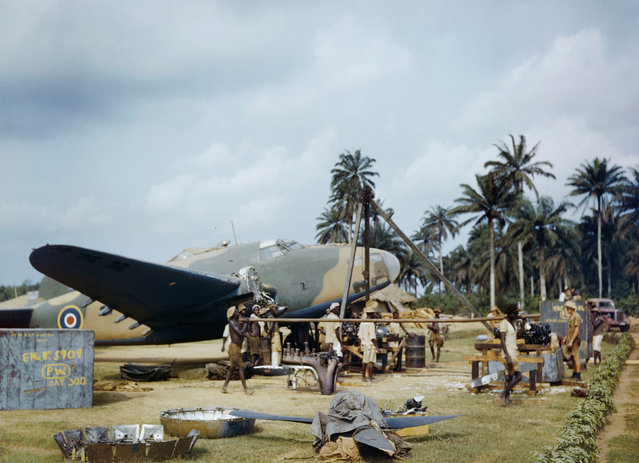
Local workers helping RAF fitters change the engine of a Lockheed Hudson at Yundum in the Gambia, April 1943. (Photo by Ted Dearberg/IWM/PA Wire)
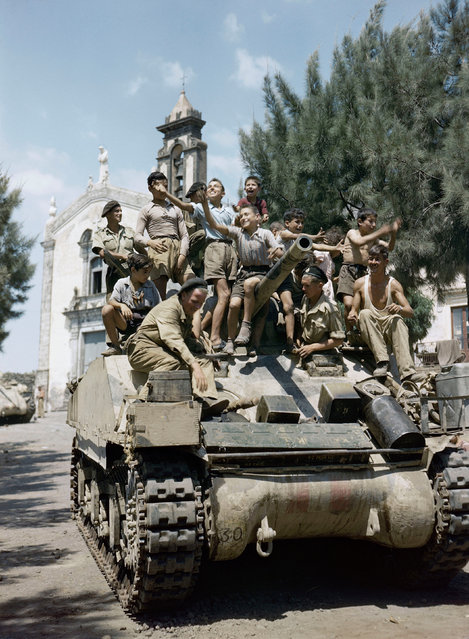
Children aboard a Sherman tank of the 3rd County of London Yeomanry in Sicily, August 1943. (Photo by IWM/PA Wire)

The RAF’s top-scoring fighter pilot, Wing Commander James “Johnnie” Johnson, with his Spitfire and pet labrador Sally in Normandy, July 1944. (Photo by IWM/PA Wire)
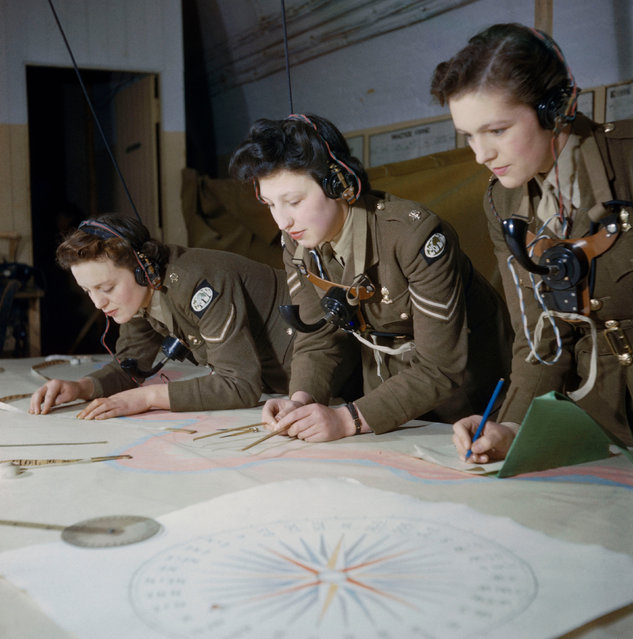
Auxiliary Territorial Service (ATS) plotters at work at Coastal Artillery Headquarters in Dover, December 1942. The Auxiliary Territorial Service was the women's branch of the British Army during the Second World War. It was formed on 9 September 1938, initially as a women's voluntary service, and existed until 1 February 1949, when it was merged into the Women's Royal Army Corps. The ATS had its roots in the Women's Auxiliary Army Corps (WAAC), which was formed in 1917 as a voluntary service. During the First World War its members served in a number of jobs including clerks, cooks, telephonists and waitresses. The WAAC was disbanded after four years in 1921. (Photo by Ted Dearberg/IWM/PA Wire)
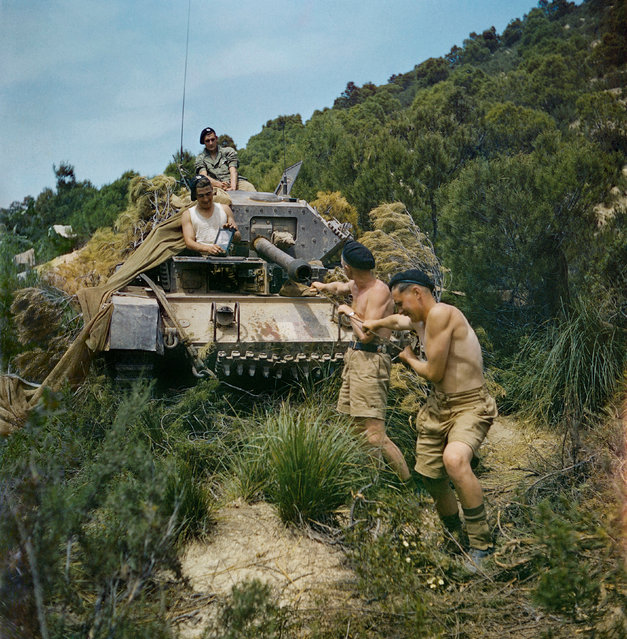
A crew from the 16th/5th Lancers, 6th Armoured Division, cleaning the gun barrel of their Crusader tank at El Aroussa in Tunisia, May 1943. (Photo by Ted Dearberg/IWM/PA Wire)

A 5.5-inch gun crew from 75th (Shropshire Yeomanry) Medium Regiment, Royal Artillery, in action in Italy, September 1943. (Photo by IWM/PA Wire)
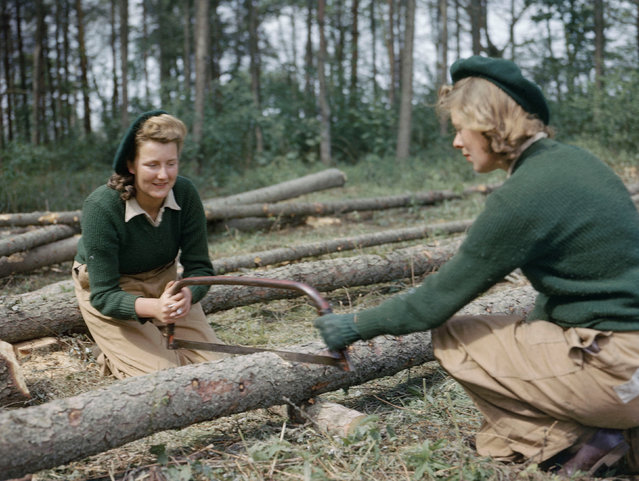
Land Army members sawing larch poles for use as pit props at the Women’s Timber Corps training camp at Culford, Suffolk, 1943. (Photo by IWM/PA Wire)
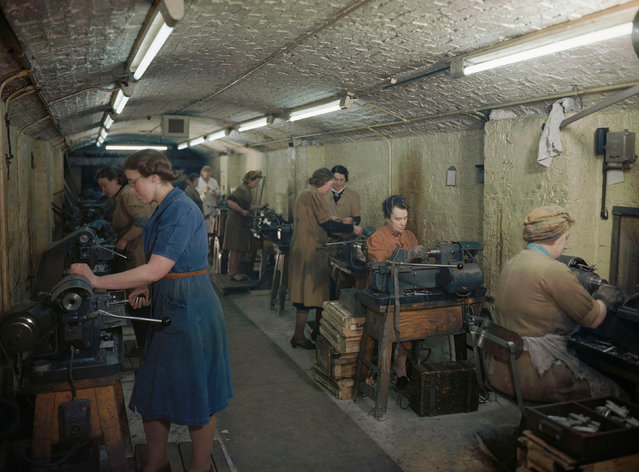
Women producing bullets and cannon shells in an underground munitions factory on the Wirral, Merseyside, 1945. (Photo by IWM/PA Wire)
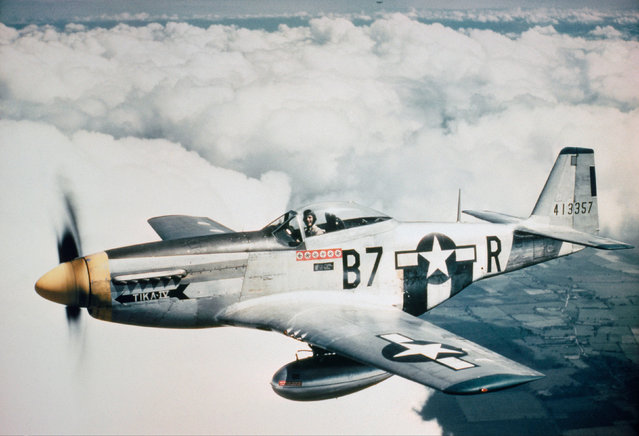
Lt Vernon R Richards of the 361st Fighter Group flying his P-51D Mustang nicknamed Tika IV during a bomber escort mission in 1944. (Photo by IWM/PA Wire)
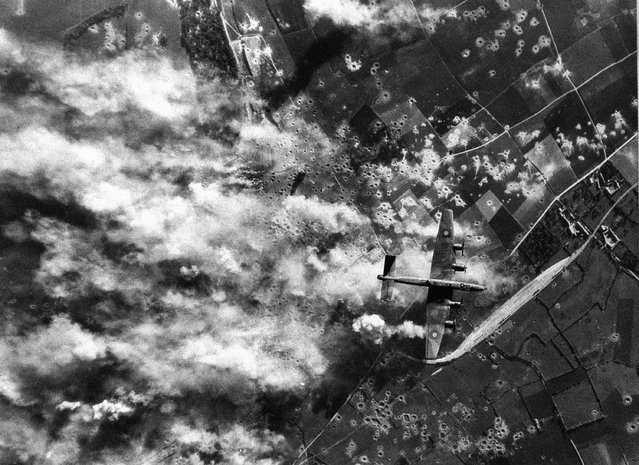
An RAF Halifax over the target a large concrete structure in the Pas De Calais area in France on July 6, 1944 during daylight attack by Bomber Command where bursting bombs send clouds of smoke and dust into the Air. (Photo by AP Photo)

British soldiers cautiously approach an enemy supply truck which their guns set afire during recent action in the Western Desert, July 12, 1942. The vehicle was part of a supply column. (Photo by AP Photo)
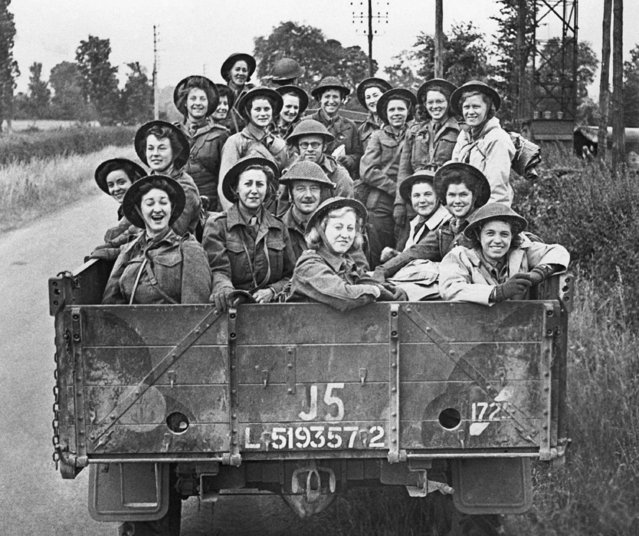
Members of Queen Alexandra's Imperial Military Nursing Service, the Nursing Service which is attached to the British Army, have arrived in France to assist in tending the wounded. A truck load of British Army nurses on their way to the Normandy front on June 23, 1944. (Photo by AP Photo)

Two girls stand in the crater caused by the explosion of a bomb dropped from a German plane at a small town in Essex, England, May 25, 1940. This bomb dropped in a yard, wrecking the hen coop in background. A girl was injured elsewhere in Essex and 11 men were injured in Yorkshire by bombs the same day. (Photo by AP Photo)
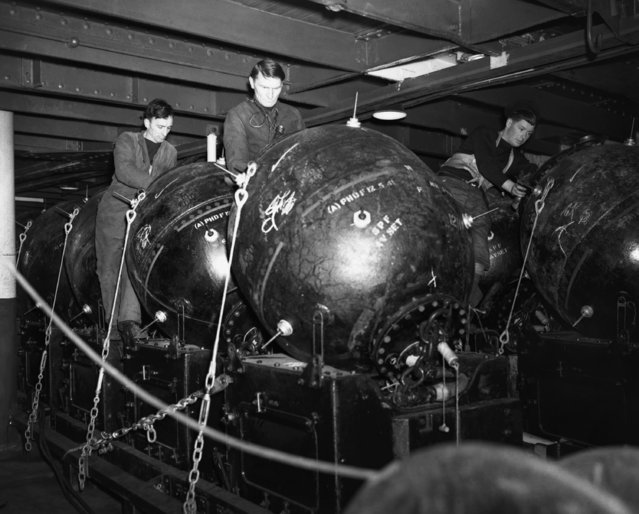
A row of death-bringing mines on board a British mine layer on May 25, 1941. The mines move along tracks, like railway lines along both sides of the minelayer, to be dropped into the sea. (Photo by AP Photo)
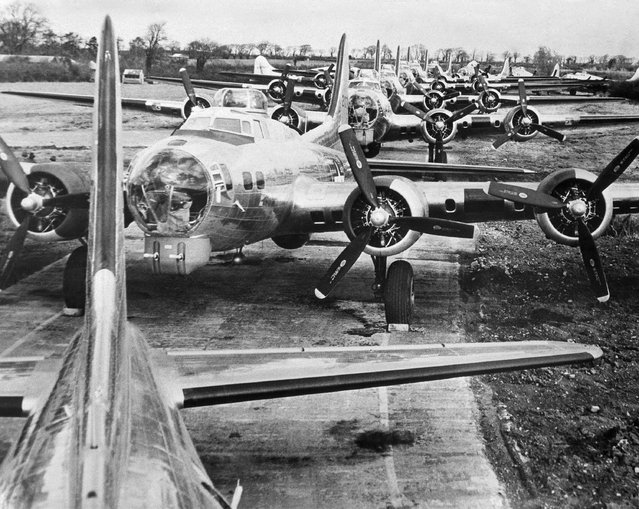
Long row of shiny new Flying Fortresses, part of huge reserves being built up in Britain for D-Day, stands by to be flown to combat units as replacements, May 25, 1944. (Photo by AP Photo)
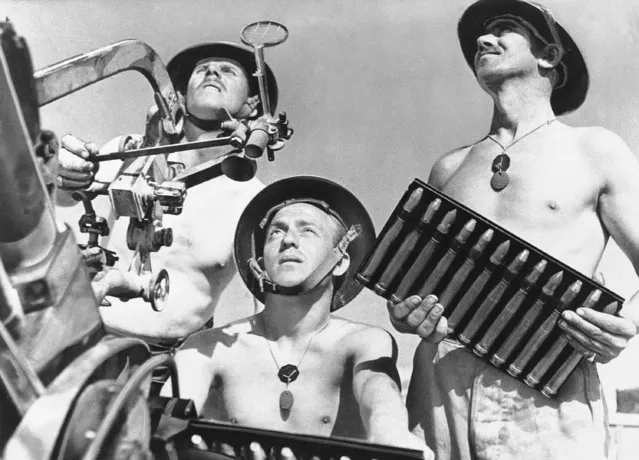
Gunners man an Anti-Aircraft weapon in the British-held Fort at Tobruk, Libya, May 26, 1941, which has been under siege since Axis troops east from Bengasi and penetrated to Salum, Egypt, last month. The Italian high command reported a new Axis bombing attack on the port of Tobruk and asserted that a British warship had been damaged and four steamers sunk. (Photo by AP Photo)

Some of Britain's Land Army girls help to pitch straw from a rick into a thatch-making machine, at a farm, somewhere in England, May 31, 1943. (Photo by AP Photo)
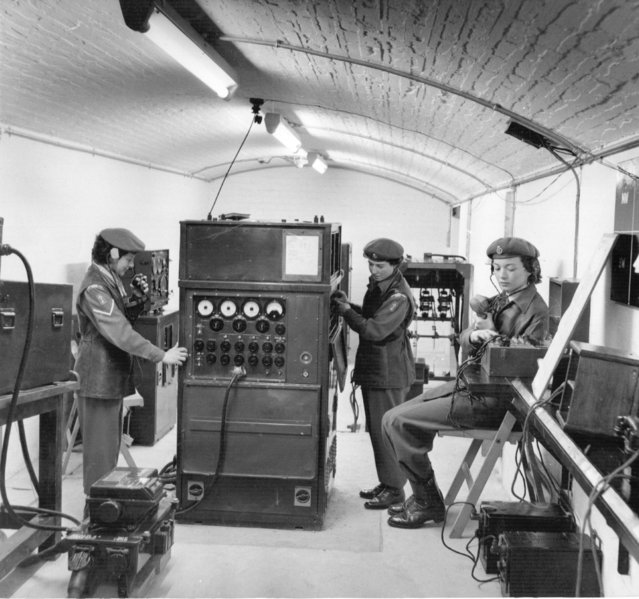
Members of the Women's Royal Army Corps (WRAC) training as controllers of gun batteries during action, on the Rock of Gibraltar, 8th May 1944. (Photo by Bert Hardy/Picture Post/Getty Images)
13 Jul 2017 07:52:00,
post received
0 comments
